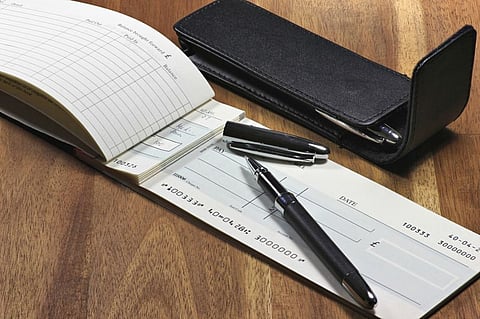UAE: Worried about a bounced cheque? This online tool tells you if it will clear
The tool by Etihad Credit Bureau analyses issuer’s history to assess cheque clearing risk

Dubai: If you have received a cheque and are unsure whether it will bounce or clear successfully, there's an official tool in the UAE that can help you assess the risk, it's called the Cheque Clearance Indicator, developed by Etihad Credit Bureau (AECB).
This digital service provides a probability score indicating whether a cheque is likely to be honoured. The result is based on the cheque issuer’s payment behaviour, credit history, and their record of cheque transactions across the UAE.
Why this tool is useful
The Cheque Clearance Indicator can help individuals and businesses make informed decisions before accepting cheques. It gives insight into the cheque issuer's financial reliability and legal obligations over the past 24 months. If you regularly deal with cheques, whether for rent, business transactions, or services, it can also help you forecast incoming cash flow by estimating whether a cheque will clear or not.
What influences the Cheque Clearance Indicator?
The reliability score is influenced by several key factors:
The issuer’s consistency and frequency of successfully cleared cheques across different bank accounts.
The issuer’s overall creditworthiness.
Their payment behaviour over the past 36 months, as reported in AECB’s credit database.
How it works
According to Al Etihad Credit Bureau, the Cheque Clearance Indicator is calculated using a sophisticated algorithm that applies predictive analytics. It not only considers the issuer’s cheque history, but also incorporates detailed credit information from AECB’s database. This includes comparisons with the broader credit and cheque behaviour patterns of other individuals and companies in the UAE.
When you might not receive an indicator
There are certain situations in which the Cheque Clearance Indicator may not be generated. These include:
The cheque issuer has been reported as deceased by an information provider.
The IBAN linked to the cheque has not been reported to AECB.
Insufficient credit history or cheque transaction data is available.
It’s important to note that AECB does not guarantee the cheque will clear. Instead, it provides a data-driven probability to help the cheque receiver assess the risk and decide whether to accept the cheque as a valid form of payment.
Sign up for the Daily Briefing
Get the latest news and updates straight to your inbox

